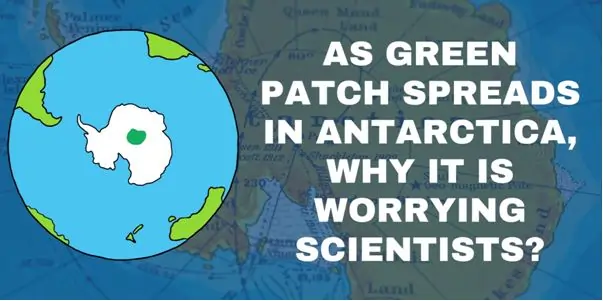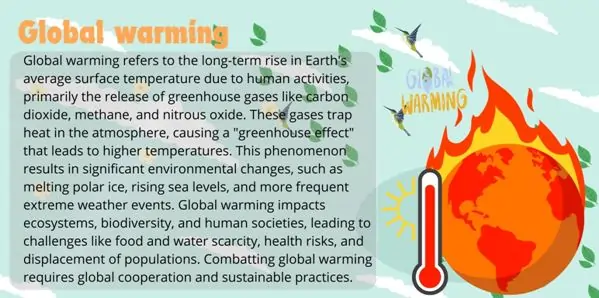
Today our focus is on the last point of our planet – Antarctica, the World Ice and it is changing. The results of a new research unveiled by means of the Nature Geoscience journal show that some areas of Antarctica are greening at an unprecedented rate. Of those indicating profound changes due to climate change, this greening, most presided over by mosses, paints a direr picture. While science is warning people, it is important to know what this makes of and why it has become such an object of concern.
The Study's Findings
The study is published by scientists from the University of Exeter, Hertfordshire, and the British Antarctic Survey using satellite images of the Antarctic Peninsula taken between 1986 and 2021. The results were startling: Vegetation cover rose from below one square kilometre in 1986 to about 12 square kilometres in 2021. This increased plant cover by a factor of ten is symptomatic of the various transformations going on in this area.
The Role of Climate Change
The main impetus behind this greening is climate change. In particular, the air temperature has increased in the Antarctic Peninsula at a rate nearly threefold the average global rate. This warming has brought in circumstances that challenges plant growth, especially Moss in this portion of the Antarctic. It also states that the average global temperature has risen and, as a result, heat waves recurrent are more powerful, which contributes to the growth of vegetation even more.
Implications for Biodiversity
The rapid vegetation cover formation in the Antarctica has important consequences for the contemporary fauna and flora of this territory. If the new plant species are interrelated with ice in some way then they can pose a threat to native species that have learnt to exist in that environment. Secondly, the spread of vegetation also affects the physical, chemical and biological characteristics of soil and nutrient cycle everything through food chain.Specialists are worried about such shifts as these changes may threaten extraordinary Antarctic species and decrease the level of diversity.
Impact on Global Climate
As you will come to realize, a rather significant role as to the climatic conditions of the planet is accorded to Antarctica. Said ice shelves and floating glaciers help regulate global temperature by reflecting sunlight back to space. That is, the greening of Antarctica could endanger the balance since vegetation reflects more heat than white ice and snow. It can result in increased global temperature, which intensifies more changes that participate in the cycle of changes hence worsening climate change.

Research and Monitoring
To ably capture the greening phenomenon, scientists are investing heavily in research and surveillance activities. Satellite data and ground data are employed to monitor the dynamics in the vegetation cover and the resultant effects underway. Scientists are also researching the genotype of the plants in order to understand their source and further spreadability. These findings are important for designing interventions that will help to reduce the impact of climate change, and the protection of Antarctic environment.
However, the greening process of Antarctic region gives a rude shock to the reality of climate change effectively and efficiently. Scientists have been warning the population and it is evident that much needs to be done to reverse the effects of global warming in one of the most sensitive areas of the globe. Antarctica and its one-of-its-kind wildlife shall only remain intact and we all join hands to counter this problem.
Why is it a cause of concern?
Disruption of Ecosystems
The introduction of the new species in Antarctica disrupts the biological balance of the region. The green plants may out complete the native species as they have been living in this trying climate for millions of years, and new vegetation is an advantage. This can upset the food chain, which in a way can affect the indigenous species in addition to reducing the species diversity in an ecosystem.
Change in the Physical Quality of the Soil and Element Cycling
Vegetation growth changes soil characteristics besides affecting nutrient cycling within the ecosystems at Antarctica. It is found that mosses and other such plants alter the chemistry of the soil; its acidity and the nutrients the plants can take up. These changes can alter microorganisms, invertebrates and other soil inhabitants throughout the biosphere of the ecosystem in question.
Impact on Global Climate
Even the near side of the moon gets more sun as a lot of sun is reflected back by Antarctica’s ice fields and glaciers. With more greenery, comes more consumption of sunlight and heat that more enhances the melting of ice than the present ice and snow. It can thus help to create positive feedback cycle where melt increases temperature, and enhance the negative impacts of climate change on the global climate system.
Rise in Sea Levels
The listed effects of the global warming also take the example of Antarctica where climate change and increase vegetation has led to the melting of ice and consequently increased sea level. This obviously is a great danger for coastal users and coastal environments all over the world. Sea level rise results in increased incidences of flooding, shoreline erosion especially affecting human beings and animal’s shelter.
Loss of Biodiversity
The current shifts in the Antarctic environment pose a risk to the area’s special biological systems. That means the species that have adapted well to a life in frozen environment and on limited vegetation might struggle to make a shift in response to the changes arising from the greening process. Their absence would mean a loss of species diversity and stability in the ecosystem and general ecosystem heterogeneity.
Science and Environment Risk
Environmental first-differential dynamics of the continent have created a level of scientific and environmental volatility in Antarctica. Many specialists continue to comprehend the complete impact of such changes and how they will manifest themselves within the forthcoming decades. For such reasons, the net impacts are difficult to anticipate and, therefore, to mitigate adequately.
Call to Action
The growing of green surface area in Antarctica is symbolic of the calls for change on climate change. This gets a spike in the awareness of Greenhouse gases emissions, moving from fossil energy sources to renewable and better ways of land management. But if the warming process continues, climate change effects will worsen and become irreversible harming Antarctica and the world thus requiring international cooperate effort to prevent its adverse impacts to fragile Antarctica environment.
How these concerns might be dealt with?
To narrow down the concerns which are linked to the process of greening of Antarctica, a more elaborate approach as such scientific research, policies and international cooperation should be taken. Here are some strategies to mitigate the impact of this phenomenon:
1. Enhance efforts for combating climate change
- Reduce Greenhouse Gas Emissions: The primary reason for the greening of Antarctica is global warming. Controlling the output of greenhouse gases by implementing policies on use of renewable energy, energy efficiency as well as on the management of transport is important. Governments and their citizens should honour conventions like the Paris Agreement that seeks to provide global response to climate change by reducing temperature increase.
- Promote Carbon Sequestration: Natural carbon reservoirs, including forests and the ocean, need to be conserved to treat the atmospheric air by capturing CO2. These are playing important steps; reforestation, afforestation and the preservation of the standing forests.
2. Improve Scientific Endeavours and Surveillance
- Conduct Comprehensive Studies: Further empirical work is needed in order to achieve a fuller picture of the extent of the greening trend and its consequences. This involves understanding of Genus and species of the plants, their effects on the immediate and other environments and possibility to spread further.
- Monitor Environmental Changes: Put in place intensive decentralized and automated scrutiny with space observational data and field measurements to monitor modifications in vegetation density, type of soils, and weather. These data will help in estimating further tendencies and developing right strategies for business.
3. Restore Native Biodiversity
- Conservation Efforts: Run some conservation practices to shield native species and its ecosystems that are at risk with the invasion of vegetation. Some measures are development of conservation units, and the rehabilitation of habitats as well as combating invasive species.
- Promote Biodiversity: Support the development of local plant vegetation that is well suited to the undercurrent climate of Antarctica. It may also be used restore the natural environment and sustain the resources of a given place.
4. Develop Adaptation Strategies
- Implement Adaptive Management: The additional useful strategies include the establishment and application of a management plan that is adaptable and can be altered whenever new research has been conducted and whenever changes have occurred in the environment. This strategy is rather effective for immediate reactions to the new threats.
- Community Involvement: Participation of communities in the local and indigenous level for policy on conservation and adaptation. Some of the most important aspects of their knowledge and practices can be applied to establish ways of dealing with environmental transformations.
5. Promote awareness and Universal Partnerships
- Public Awareness Campaigns: Inform the public about an opportunity to protect Antarctic environment and the difficulties that may occur due to changing climate. Awareness creation can bring together support and encourage more people to act in favour of the preservation of various species.
- International Collaboration: Build international partnership to solve global climate change problems. Coordination in the context of governments, science institutions, and environmental non-governmental organizations will help to set better policies and practices.
6. Sustainable Tourism Practices
- Regulate Tourism: Control tourism-related exercises so as to reduce the effects that the activities have on the Antarctic environment. This may involve limiting the number of visitors the game reserve can host per day, implementing proper waste disposal and environmentally friendly measures.
- Educate Tourists: Send education seminars for the tourists stating the different aspects of the Antarctic environment and the need for conservation.
The challenges linked with greening of Antarctica are not easy to overcome and should be approached in very systematic and strategic way. It is possible to minimize the consequences of climate change by improving measures to reduce greenhouse gases emissions, increasing investment into research, preserving the native species, creating the methods of phased adaptation, increasing awareness, creating the global partnership, and developing eco-tourism. It is up to all of us to choose the future of Antarctica and the delicate ecosystems which can found only here.